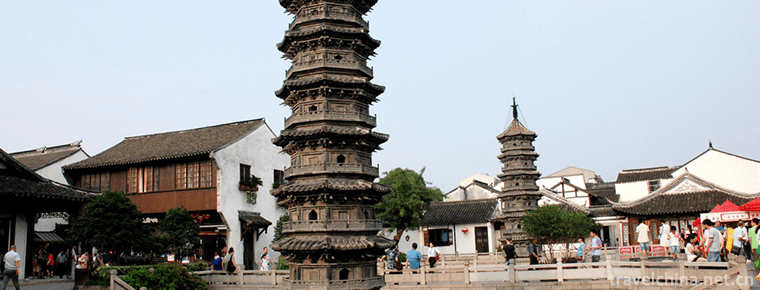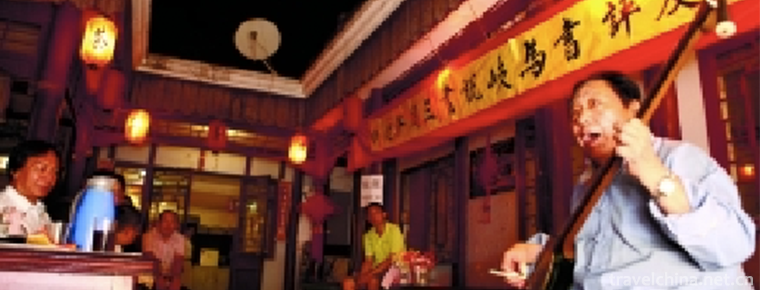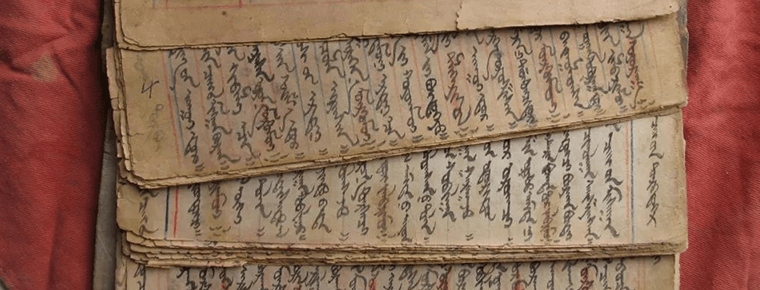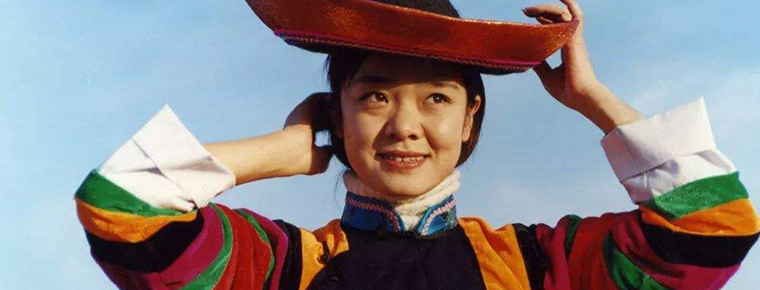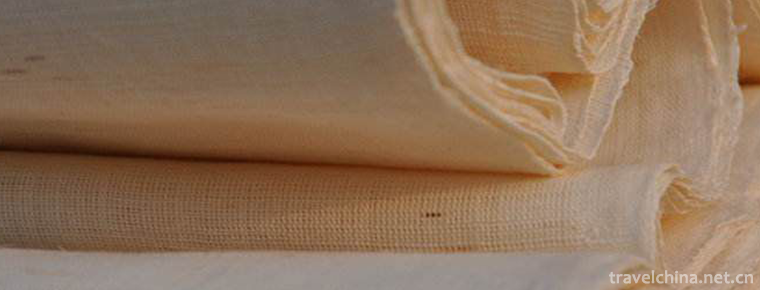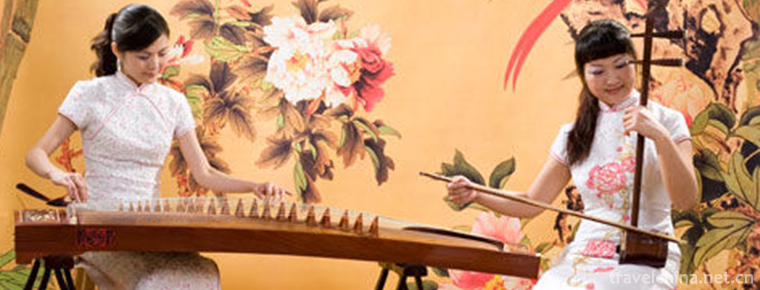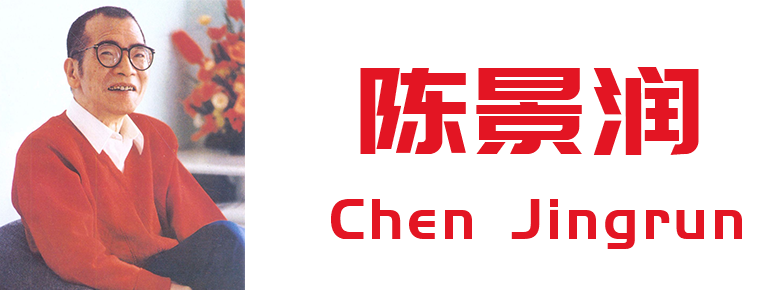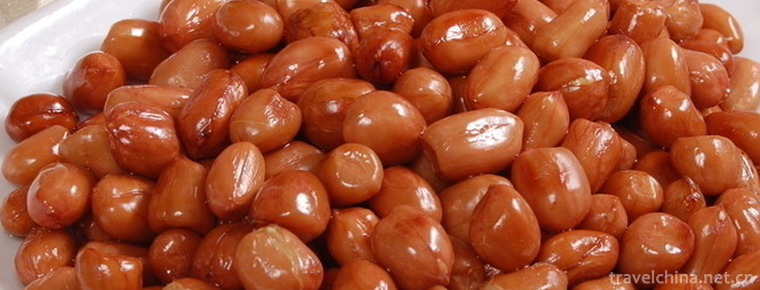Production Techniques of Wufangzhai Zongzi
Production Techniques of Wufangzhai Zongzi
Wufangzhai Zongzi production skills, the local traditional skills of Jiaxing City, Zhejiang Province, one of the national intangible cultural heritage.
The traditional production techniques of Wufangzhai zongzi are mainly divided into 36 processes, such as material selection, rice dipping, leaf boiling, stuffing, shelling, wrapping, thread binding and boiling, which are finally made into Wufangzhai zongzi.
On May 23, 2011, Wufangzhai Zongzi production technology was approved by the State Council of the People's Republic of China and listed in the third batch of national intangible cultural heritage list, project number_-207.
historical origin
Zongzi is one of the most profound festival foods in Chinese history. More than 10,000 years ago, people wrapped food materials with plant leaves and cooked them by "stone cooking" method, which is the embryonic form of zongzi. In Xia, Shang and Zhou Dynasties, people used plant leaves to wrap millet into horns instead of cattle as sacrifices. The earliest rice dumpling - "corns" came into being. After a long historical evolution, the variety of zongzi has gradually enriched, and the production techniques have become increasingly mature. It has become an integral part of the daily life of the people in Jiangnan, and created a wonderful flower in Chinese traditional snack culture.
In the early years of the Republic of China, Zhang Jinquan, a businessman from Zhejiang Province, set up a stall to sell dumplings at the Children's Bridge in Jiaxing North Street, which was very popular because of its unique shape and taste. In 1921, Zhang Jinquan opened the first "Wufangzhai" Zongzi Store in Zhangjialang, and gradually became famous in the south of the Yangtze River by virtue of his exquisite production skills, known as "the king of Zongzi". After experiencing the difficult war years and the Cultural Revolution, the reform and opening-up made the industry of dumplings in Wufangzhai develop rapidly.
Technological characteristics
Wufangzhai dumplings, which were made by the traditional production techniques of Wufangzhai dumplings, eventually formed the unique and unique recipe of Wufangzhai, which created the prominent characteristics of "glutinous but not pasty, fat but not greasy, tender meat, salty and sweet" of Wufangzhai dumplings, and became the typical representative of Jiangnan dumplings.
flavor
Wufangzhai zongzi has southern flavor zongzi, with many colors and sweet and salty taste; northern flavor zongzi, pure rice or jujube, red beans, sweet or dipped in sugar; northwest zongzi, pure rice, cold honey.
Materials used
Fifth Fang Zhai zongzi includes: (1) pure rice zongzi, pure glutinous rice zongzi; 2) stustustuffed zongzi, stustuffing with bean paste, jujujumu, sesame bud, lotus seed, cococonut, etc; (3) jafruit zongzi, fruit materials with dates, chescheschescheschescheschescheschescheschescheschesches, persimim, gin, ginkgo, peanut, peanut, lotseeds, Guiyuan, etc; (4) bean zonzongzi, there are red beabeans, mumubean, mumumubean, mumumumubean, bean, broad bean, soybean, soybean, soybean, soybean, soybean, soybean, soybean, such as: zongzizi, zongzi beabeaZongcai, pork, lard, ham, bacon, fork-roast Meat, sausage, beef, chicken, duck, goose, fresh eggs, salted eggs, shrimp, dried scallops, salted vegetables and so on.
Technological process
Wufangzhai still retains the traditional handicraft skills in the wrapping and binding process of zongzi. It wraps zongzi according to the procedures of preliminary shape, adding part of material rice, filling, adding material rice, weighing, stereotyping and wrapping. It requires that the material rice be put in twice, the amount of the material is correct, the position of the filling is in the middle, the shape is standard, and the corners are right. The size of both ends is uniform, and the tied thread is wrapped up according to the standard. The loosening is appropriate, and the formed zongzi is not damaged.
Specific practices are as follows: choose sweet glutinous rice, soak glutinous rice in warm water for 2 or 3 hours (flex 1 to 2 times during the period so that rice can be better soaked), and use a small dustpan or filter basket to filter out moisture. Cut the pork from the lean pork and cut the meat into chunks. Next, add the seasoning and mix well. Boil the leaves of Zongcotyledons in water. After boiling for 10 minutes, take out the cold water, wash and cut the ends of the leaves, then filter them out. Cut several cotton threads, each about 20 cm long. Put a towel on your leg (knee) for wetting clothes. Take two (both opposite) dumplings and overlap them in the opposite direction (incomplete). Put them in the rice. Gently scratch a word between the rice with your index finger. Put them in the meat, and then fill them with rice to cover the meat. The right hand folds the outside leaves in and folds them back, wraps one end and completes the other end in the same way. The tied dumplings should be tied one by one in the middle before they are tied from one end to the other to prevent deformation. The tightness of the rope can not be too tight (boiled explosion) or too loose (water intake), so as not to move slightly. Tie them up and put them into the pot one by one. Then put them in cold water and fill them with dumplings about 1 cm. Ignite them. After boiling water for 15 minutes, change the top and bottom zongzi in the pot and cook them in slow heat for 1 hour.
Inheritance and Protection
Inheritance value
Wufangzhai Zongzi production technology has very high practical value, cultural value, research value and economic value. Its core lies in the perfect combination of the old brand culture and traditional skills, which emits unique charm.
Pragmatic value
Zongzi is called "Oriental Fast Food" because of its product characteristics. It is a nutritious, delicious and convenient food. The combination of rice and various meat fillings makes it rich in protein, vitamins and trace elements. Li Shizhen's Compendium of Materia Medica in Ming Dynasty has recorded the medicinal value of Ruan Ye. Modern studies have shown that the leaves are not only rich in vitamins and sodium, calcium, magnesium, phosphorus, selenium, iron, etc., but also flavonoids extracted from the leaves are good antineoplastic drugs. Therefore, zongzi can be used not only as a nutritious and delicious meal, but also as a convenient snack to fill hunger.
Cultural Value
Zongzi is the deepest food in Chinese history so far. It has not only ancient poetry, but also modern emotion, and also the national commemorative significance. Wufangzhai is a century-old brand with profound historical and cultural connotations. It is a city card of Jiaxing. Its intangible assets have exceeded 500 million yuan. The perfect combination of old-fashioned culture and zongzi culture exudes unique charm. Since the reform and opening up, Wufangzhai Zongzi, as a carrier of Chinese national culture, has been acting as an "envoy of foreign exchange" and promoting Chinese and traditional culture to the whole country and even the world.
Research Value
Zongzi is an outstanding representative of Chinese traditional snacks. Studying its origin and evolution is of great significance for its inheritance, protection and development. Wufangzhai is the leader of the zongzi industry. Under the circumstances that most of the old-fashioned enterprises in China are hard to survive or even endangered, Wufangzhai is unique. It develops harmoniously in inheritance and innovation, and has become a successful example of the productive protection of traditional skills. Therefore, the study of Wufangzhai's development path is of great significance for the inheritance and sustainable development of other old Chinese traditional skills.
Current situation of inheritance
In the process of modernization, the traditional techniques of making zongzi (including those of Wufangzhai) are still inevitably on the verge of crisis. On the one hand, the production of zongzi is becoming more intensive and commercialized. The phenomenon of household making zongzi has become a history. Most young people can not make zongzi. On the other hand, the automation of production has been continuously improved in enterprises. The inheritance of traditional zongzi crafts has been in a serious crisis, and various measures are urgently needed. Measures should be taken to protect it.
Heritage figures
Yao Jiuhua, male, (June 1929 - November 2012) from South China, Lanxi, Zhejiang Province. In May 2009, Yao Jiuhua was selected as the representative successor of the third batch of national intangible cultural heritage projects. Jiaxing City, Zhejiang Province, declared the project: Wufangzhai Zongzi production skills.
protective measures
In order to publicize the culture of zongzi and display the skills of wrapping zongzi in Wufangzhai, Wufangzhai Group attaches great importance to the brand and cultural protection construction of Wufangzhai. From the decision-making level of the group to the front-line management department, it has established specialized agencies to carry out work to explore, summarize, summarize, enrich and carry forward the culture of zongzi of the Chinese nation. In the process of inheritance and development, Wufangzhai people pay great attention to the traditional techniques of making dumplings in the process of selecting materials, ingredients, seasoning, dressing, cooking and so on. To ensure that the brand of Wufangzhai is effectively maintained and disseminated.
1. Protection and inheritance of wrapped rice dumplings through the establishment of a cultural exhibition area for wrapped rice dumplings
Wufangzhai Group disseminates zongzi culture through various propaganda windows. In order to further promote the brand culture, Wufangzhai also created a unique way in the industrial park to create a Zongyi cultural corridor. On the wall of the corridor are hanging many painting and calligraphy materials related to Zongzi culture. Through this corridor, tourists can visit the whole process of production of Zongzi in Wufangzhai, and let visitors be in the scene. They are deeply impressed by the combination of traditional handicraft technology and modern science and technology in the production process of Zongzi in Wufangzhai.
2. Strengthen the education of cultural inheritance in Colleges and universities, strengthen the scale of talent cultivation, and enhance the ability of the team of Zongyi teachers
Through cooperation with universities and joint training, through classroom teaching and field practice, Wufangzhai Group passes the skills of wrapping dumplings and the culture of dumplings to college students, thus arousing students'great attention and discovering the value of inheritance of intangible cultural heritage, thus playing the role of protection of intangible cultural heritage. 。 Through teaching practice, we can promote the healthy inheritance of intangible cultural heritage among college students, thus promoting the protection, inheritance and sustainable development of intangible cultural heritage.
Wufangzhai Group has selected and formed the first team of Zongyi artists. The first nine candidates for the training of Zongyi artists were selected from the wrapping workshop. Except for two full-time candidates, the other seven candidates were all excellent candidates.
Wufangzhai trained zongzi artists in enterprise profile, zongzi culture, zongzi common sense, media visits, wrapping technology, body performance and interpretation training. Zongyi artists engage in Zongyi performances and explanations in industrial parks, industrial tourist areas, sales promotion venues, exhibitions and various folk cultural activities, publicize the traditional culture of Wufangzhai Zongzi, convey the long history of Chinese Zongzi, and face the society with a professional image.
3. Spread the skills and culture of wrapping rice dumplings to the whole country and even the world with festivals and various kinds of tourism and cultural activities as an opportunity.
The Wufangzhai wrapped dumplings performing team performed many excellent performances in Guangzhou, Shanghai, Ning, Yong and Beijing, which not only showed the charming charm of dumplings culture, but also set up the artistic image of the Wufangzhai people in the times, reflecting the strong production of Chinese dumplings and traditional food culture. In addition, the stunt performance team of wrapping dumplings was invited to perform in Hong Kong, Taiwan, Singapore, Japan and other places to show the charming charm of Chinese dumplings culture to the world, and achieved a sensational effect. In addition, each year during the Dragon Boat Festival, the Wufangzhai Group also actively organizes the "Wufangzhai Cup" family wrapping rice dumplings competition, which is not only the highlight of the Dragon Boat Festival, but also the spread of the culture of rice dumplings to families.
Wufangzhai has always been concerned by the media. The vigorous dissemination of nearly 100 famous newspapers, television networks and other media highlights the spirit and culture of Wufangzhai. The first Chinese Zongzi Cultural Festival initiated and hosted by Wufangzhai not only shows the special charm of Wufangzhai, but also promotes the development of the whole Chinese Zongzi industry and Zongzi in Zhongzhong. The influence of China's food industry. All these have deepened people's understanding of the Chinese national dumplings, the most profound traditional food in Chinese history.
social influence
Important activities
In September 2017, Wufangzhai Zongzi production techniques were exhibited at the 9th Zhejiang-China intangible cultural heritage exposition. Through on-site exhibition, exhibition and marketing activities of representative inheritors of non-heritage traditional techniques and their representative works, the work of non-heritage protection was publicized.
In January 2018, Wufang Zhai Zongzi participated in the 29th Ningbo Spring Festival Annual Goods Fair to deepen the audience's understanding of Wufang Zhai Zongzi and its skills.
Honorary recognition
Wufangzhai Zongzi and its production techniques have successively won the title of "China's old brand", "China's well-known trademark", "National Geographic Sign Registration" and "China's Famous Points".

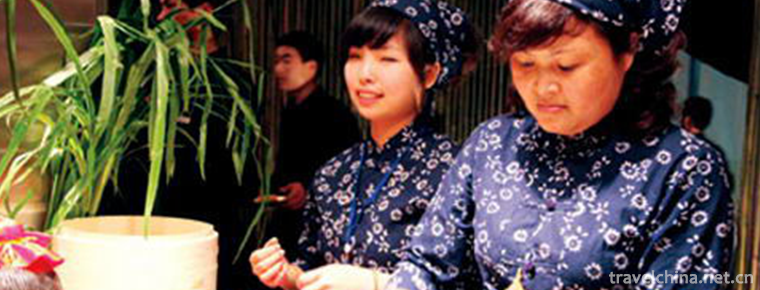
-
Nanxiang ancient town
Jiading Nanxiang Ancient Town is a national AAAAA scenic spot, located in Nanxiang Town, Jiading District, Shanghai. There are famous scenic spots such as brick pagoda, Guyiyuan, Hebi Mountain, Liuyun.
Views: 116 Time 2019-02-07 -
Beijing storytelling
Beijing Book Review is a traditional art of rap and singing. Legend has it that Liu Jingting (1587-1668), a Southern Jiangnan storyteller, came to Beijing in the late Ming and early Qing Dynasties.
Views: 452 Time 2019-04-04 -
Chagan Sulide Festival
Sulide, in Mongolian, has the meaning of auspiciousness, loftiness, harmony, unity and harmony. The sacrifice of Chagan Sulide is the natural worship of the universe of heaven and earth gradually form.
Views: 100 Time 2019-04-15 -
Larenbu and Jimenso
With vivid images, deep and solemn language and singing form, Larenbu and Jimenso described the love tragedy of the poor Larenbu and the pastor's sister Jimensoe, who developed from employer relations.
Views: 331 Time 2019-05-10 -
Traditional Processing Techniques of Liuweizhai Sauced Meat
Liuweizhai is a well-known Chinese brand which was founded in 1738 in the three years of Qianlong in Qing Dynasty. Its sauced meat, as a traditional food in China and a famous food in the Three Jin Dy.
Views: 143 Time 2019-05-14 -
Weaving Techniques of Summer Cloth
Wanzai summer cloth is completely manually woven. Its production process mainly consists of ramie treatment, yarn performance and weaving. It needs many processes to weave..
Views: 201 Time 2019-07-01 -
String Music Heze String Music
Heze string music is one of the second batch of national intangible cultural heritage announced by the State Council. It is a well-known traditional folk music in southwestern Shandong Province, and i.
Views: 227 Time 2019-07-01 -
Chen Jingrun
Chen Jingrun (May 22, 1933 -1996 March 19th), male, Han, non party personages. Fujian Fuzhou Man, a contemporary mathematician..
Views: 127 Time 2019-09-07 -
University Of International Business And Economics
The University of Foreign Economic and Trade is a national key university directly under the Ministry of Education. The first batch of "211 Project" and the first batch of "double first.
Views: 105 Time 2019-09-22 -
Fried peanuts
Fried peanuts is a dish made of peanuts and other materials. It belongs to the family dish and serves wine. When drinking, people often choose this dish as the next dish..
Views: 316 Time 2020-03-15 -
Luzhou transportation
By the end of 2017, the number of civil motor vehicles in Luzhou had reached 678200, an increase of 74700 over the beginning of the year. Among them, 352400 cars (including 294 tricycles and low-speed trucks), an increase of 56500, and 323700 motorcycles, an increase of 17600.
Views: 914 Time 2020-12-14 -
Yibin medical and health
By the end of 2019, there are 5120 medical and health institutions in Yibin City, including 135 hospitals (102 private hospitals); 4945 primary medical and health institutions, including 177 township health centers, 46 community health service centers (stations),.
Views: 333 Time 2020-12-18
